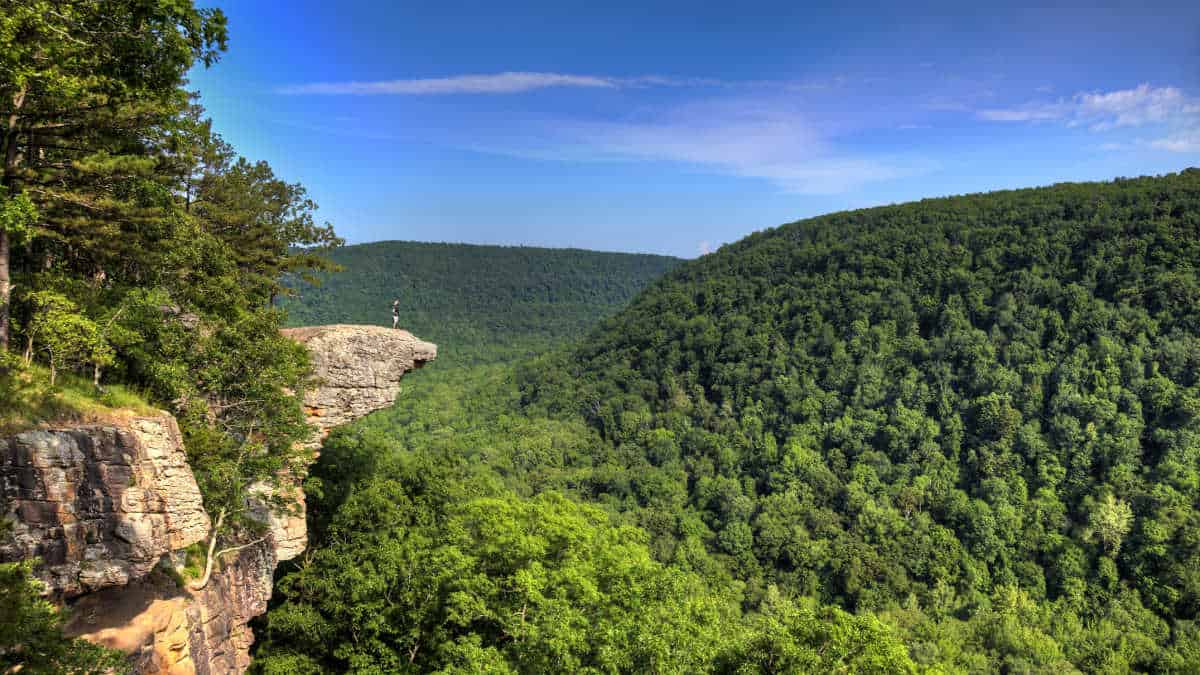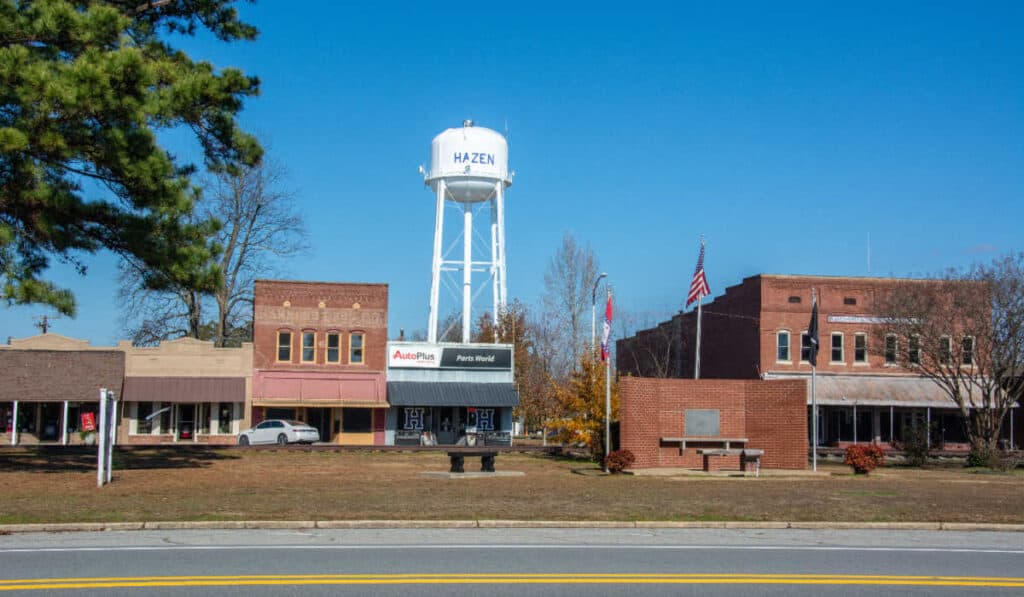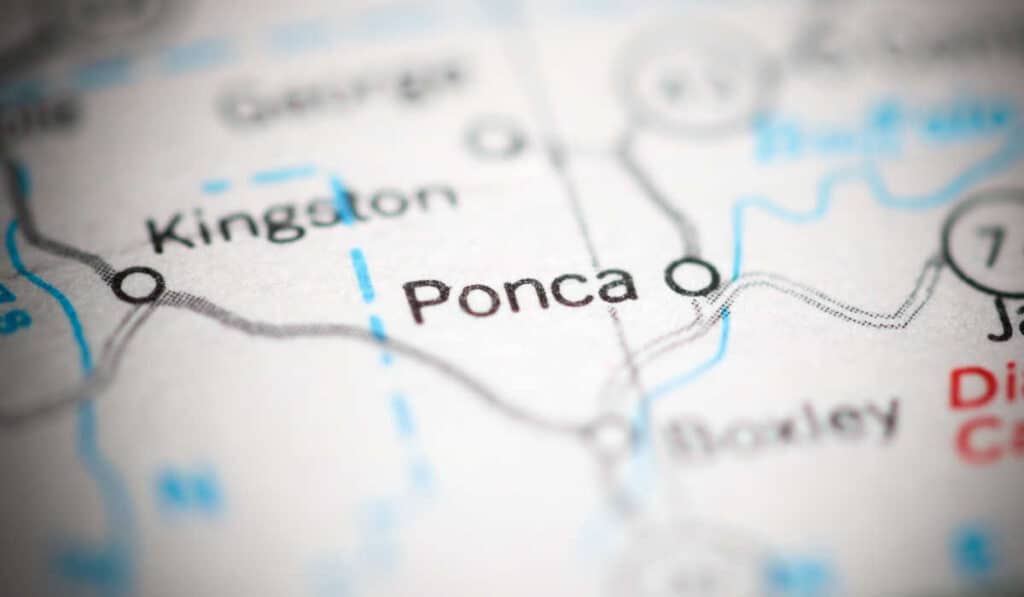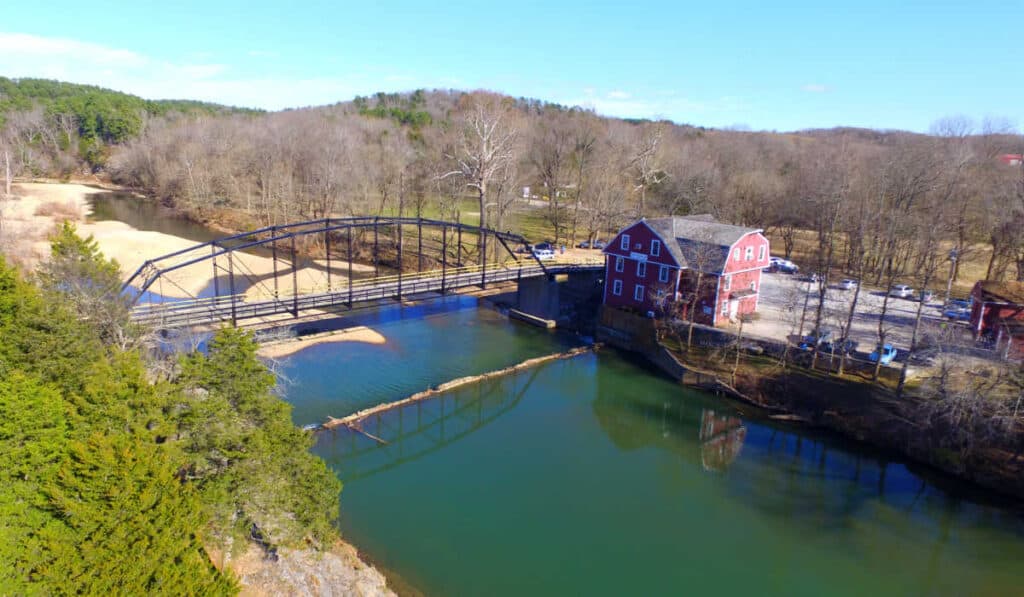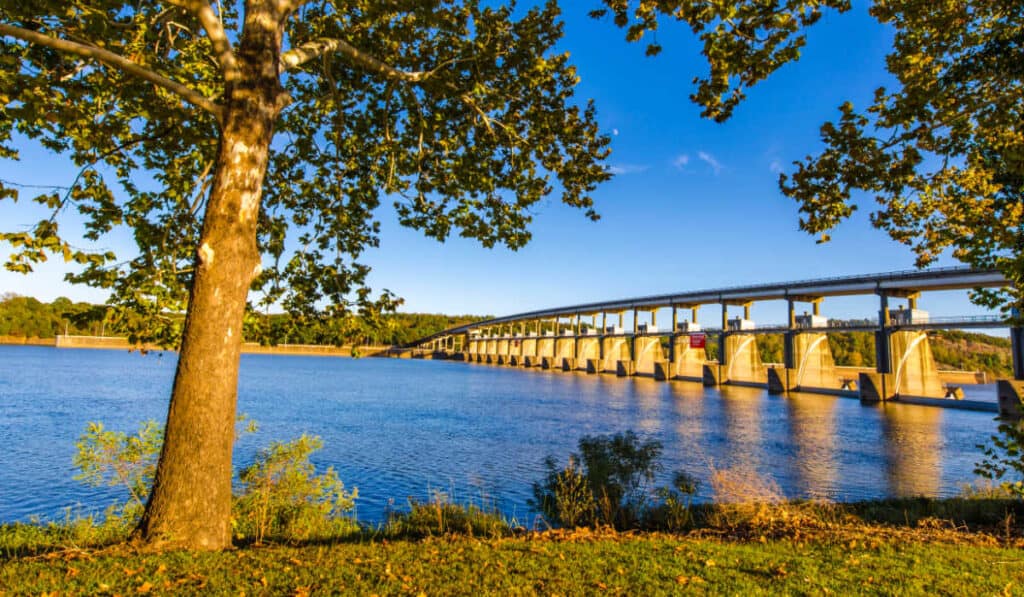The Ozarks, a captivating region encompassing parts of Missouri, Arkansas, Oklahoma, and Kansas, has an allure that draws in visitors and locals alike. Often referred to as the Ozark Mountains, Ozark Highlands, or Ozark Plateau, this area is characterized by its heavily forested highlands, providing picturesque landscapes and a wealth of outdoor recreational opportunities. The Ozarks span roughly 50,000 square miles, with the majority of this expanse found in Missouri and Arkansas.
Known for their natural beauty and geological attractions, the Ozarks boast an abundance of sparkling springs, waterfalls, lakes, caves, caverns, and karstic landforms. The region is rich in biodiversity and historical significance, which has helped shape its unique culture. Contrary to the gritty portrayal of the region in Netflix’s popular series Ozark, the real-life Ozarks offer a tranquil and charming atmosphere, reflecting the area’s abundant recreational offerings and pride in its natural heritage.
In addition to natural attractions, the Ozarks are home to picturesque towns, resort areas, and cultural sites that contribute to the region’s overall charm. One notable example is the Lake of the Ozarks, a beloved vacation destination in central Missouri. Offering a variety of activities such as boating, fishing, and exploring, the Ozarks have become a sought-after destination that is sure to delight every type of traveler.
Geography and Topography
The Ozarks, also known as the Ozark Mountains or Ozark Plateau, is a physiographic region that spans across parts of Missouri, Arkansas, Oklahoma, and Kansas. The area is known for its diverse topography, which includes mountains, plateaus, and river valleys. The region also has a rich geological history and is characterized by limestone formations, forests, and numerous rivers and caves. In this section, we will delve into the various topographical features of the Ozarks, including the Ozark Mountains, Boston Mountains, Ouachita Mountains, and more.
Ozark Mountains
The Ozark Mountains are a heavily forested group of highlands located in the south-central United States, extending southwestward from St. Louis, Missouri, to the Arkansas River. These mountains are composed of Paleozoic rocks and are characterized by a distinct karst landscape marked by numerous caves and springs.
Boston Mountains
The Boston Mountains are the highest and most rugged section of the Ozarks and are primarily located in northern Arkansas and southern Missouri. These mountains are known for their scenic views, forest-covered hills, and opportunities for hiking and outdoor exploration.
Ouachita Mountains
The Ouachita Mountains, located in southeastern Oklahoma and western Arkansas, are an extension of the Ozarks. While similar in geology, the Ouachita Mountains differ in topography with more folded and faulted landscapes. This region is also noted for its recreational opportunities, including hiking, fishing, and scenic drives.
St. Francois Mountains
The St. Francois Mountains are an ancient range located in southeastern Missouri, characterized by their rounded peaks and rich deposits of lead and iron ore. These mountains are part of the larger Ozarks region and provide various outdoor activities for visitors, including hiking, camping, and exploring the unique geology of the area.
Springfield Plateau
The Springfield Plateau is a subsection of the Ozarks located in southern Missouri and northern Arkansas, characterized by its flat to gently rolling terrain, limestone bedrock, and numerous springs and caves. It is home to major cities such as Springfield, Missouri, and provides an ideal location for outdoor enthusiasts to engage in activities such as hiking, fishing, and exploring the picturesque landscape.
Ozark Plateau
The Ozark Plateau covers parts of Kansas, Missouri, Oklahoma, and Arkansas and is characterized by its uplifted level plateaus composed of Paleozoic rocks. The diverse geology of the area makes it a popular destination for hikers, campers, and anyone looking to take in the beauty of nature.
Salem Plateau
The Salem Plateau is another subsection of the Ozarks, located primarily in southern Missouri. It is characterized by its karst topography, with numerous caves, sinkholes, and springs. Outdoor enthusiasts can enjoy exploring the unique geological features of the area, as well as partaking in water activities at Table Rock Lake, near Eureka Springs.
Arkansas River Valley
The Arkansas River Valley is a region in Arkansas that cuts through the Ozarks, creating a fertile valley characterized by its rich agricultural land and numerous riverside communities. The river offers various recreational opportunities, such as fishing, boating, and sightseeing.
Interior Highlands
The Interior Highlands is a region that encompasses the Ozark and Ouachita mountains. As the only major highland region between the Rockies to the west and the Appalachians to the east, it provides a unique mix of geological features, topography, and recreational opportunities.
Karst Topography
The Ozarks are known for their karst topography, characterized by underground caves, sinkholes, and springs formed by the dissolution of soluble rocks such as limestone. This unique geology has led to the development of numerous cave systems and fresh springs throughout the region, offering visitors the opportunity to explore these natural wonders and learn about the area’s geological history.
Nature and Outdoor Recreation
The Ozarks, a region spanning across northern Arkansas, southern Missouri, and small portions of Kansas and Oklahoma, are known for their beautiful landscapes and abundance of outdoor recreational opportunities. The region’s natural beauty can be explored through its national forests, state parks, lakes, rivers, and wildlife. This article will focus on the various ways in which the Ozarks provide outdoor enthusiasts with a multitude of activities to choose from.
National Forests and State Parks
The Ozarks is home to several national forests, such as the Ozark National Forest in Arkansas and the Mark Twain National Forest in Missouri. These forests offer many opportunities for outdoor enthusiasts, including camping, wildlife viewing, hiking, and more. Additionally, the region boasts numerous state parks, such as Mount Magazine in Arkansas, which provide scenic views and engaging recreational activities.
Lakes and Rivers
The region is dotted with a number of lakes, including the popular Lake of the Ozarks, as well as Norfork, Truman, Grand, Pomme de Terre, Bull Shoals, and Beaver Lake. These lakes offer various water-based activities such as boating, swimming, and fishing. Additionally, the Ozarks is home to several rivers, including the Arkansas River and the Buffalo National River, which are ideal for canoeing, rafting, and scenic float trips.
Hiking and Biking Trails
The Ozarks provides numerous hiking and biking trails for adventurers of all skill levels. One notable trail is the Ozark Highlands Trail which traverses across the Ozark National Forest, offering opportunities to explore the region’s natural beauty. There are also various mountain biking trails available, such as the ones found in Northwest Arkansas, which cater to cyclists of all experience levels.
Fishing and Hunting
Fishing enthusiasts will find ample opportunities in the Ozarks, thanks to the variety of lakes and rivers, offering diverse fish species like bass, trout, and catfish. Some popular fishing spots include the Taneycomo Lake and Stockton Lake. Hunting is also a popular activity in the Ozarks, with various game species available, including deer, turkey, and waterfowl.
Wildlife and Conservation
The Ozarks region is rich with diverse wildlife, making it an ideal destination for wildlife enthusiasts and photographers. The area is home to several wildlife refuges and conservation areas, such as the Missouri Department of Conservation’s efforts in managing the region’s natural resources. These conservation areas not only protect the unique habitats but also provide educational opportunities for visitors interested in learning about the region’s flora and fauna.
History and Culture
Settlement and Farming History
The Ozarks, also known as the Ozark Mountains or Ozark Plateau, is a physiographic region in the U.S. states of Missouri, Arkansas, Oklahoma, and the extreme southeastern corner of Kansas1. The region has a rich history of human habitation, dating back to the late Ice Age some 10,000 years ago2. Early settlers were drawn to the area’s fertile soils and abundant natural resources such as springs and caves. Agriculture has played a significant role in the history and economy of the Ozarks. Farmers typically grew crops such as corn, wheat, and vegetables, while also raising livestock like cattle and hogs3.
Religion and Folklore
Religion has been an important aspect of Ozark culture. The region became predominantly Protestant after the arrival of the European settlers, and a strong influence of both Baptist and Methodist denominations can be observed4. The Ozarks are also known for their unique folklore, a blend of European, Native American, and African traditions. Tales of mysterious creatures, superstitions, and folk practices have been passed down through generations, becoming integral parts of the region’s cultural heritage5.
Appalachian Influences
The Ozarks share many cultural and historical similarities with the Appalachian Mountains, which are located in the eastern United States. Just like the Ozarks, the Appalachia region is characterized by its mountainous terrain and a predominantly rural population6. Many settlers from Appalachia migrated to the Ozarks, bringing with them customs, traditions, and a distinct dialect known as Ozark English7. Both regions have a strong cultural association with “hillbillies,” a term referring to rural residents of the Appalachia and the Ozarks, who have developed their own unique ways of life as they adapted to the challenges posed by the rugged landscape.
Cities and Entertainment
Major Cities
The Ozarks region spans across portions of Missouri, Arkansas, and Oklahoma, boasting multiple vibrant cities. Some significant cities in the Ozarks include Fayetteville, Bentonville, and Eureka Springs in Arkansas, as well as Branson and Springfield in Missouri. These cities offer numerous entertainment options for residents and visitors alike.
Festivals and Events
Throughout the year, the Ozarks host a variety of festivals and events. In Bentonville, the annual BFF – Bentonville Film Festival celebrates inclusive filmmaking and features inspiring stories, while Eureka Springs is home to the Eureka Springs Blues Weekend for music enthusiasts. Branson hosts its famous Veterans Homecoming Week for honoring veterans and their service.
Museums and Galleries
The Ozarks region is renowned for its rich art and history, with numerous museums and galleries available to visitors. A prominent highlight is the Crystal Bridges Museum of American Art in Bentonville, which showcases American art pieces and offers educational programs. Additionally, cities like Springfield and Fort Smith boast several historical museums and art galleries that showcase local artists and the area’s cultural heritage.
Theme Parks and Attractions
Visitors to the Ozarks can enjoy a range of theme parks and attractions, such as Silver Dollar City in Branson, a popular 1880s-style theme park offering fun rides, live entertainment, and craft demonstrations. Meanwhile, outdoor enthusiasts can explore lake-based activities at Missouri’s Lake Taneycomo, which provides excellent fishing, boating, and sightseeing opportunities.
Sports and Recreation
Recreational activities in the Ozarks cater to a variety of interests. Some examples include hiking and mountain biking in the region’s stunning state parks and forests, as well as floating down the rivers that crisscross the Ozark Mountains. For sports lovers, cities like Fayetteville and Springfield offer various professional, college, and high school sports games to attend. The Netflix series Ozark has helped draw more attention to the region, capturing the landscape’s beauty and intrigue.
Geology and Mineral Resources
The Ozarks, a physiographic region in the U.S. states of Missouri, Arkansas, Oklahoma and Kansas, is known for its unique geology and rich mineral resources. The rocks that formed the Ozarks were originally sand, silt, and the remains of marine animals laid down in a shallow sea at the beginning of the Paleozoic Era, which began 542 million years ago.
Mineral Deposits
The Ozarks region is abundant in mineral resources, particularly in lead and iron. Missouri has been one of the leading producers of lead in the United States, primarily mined in the Old Lead Belt within the eastern portion of the Ozarks. Iron deposits can be found throughout the region, with some of the largest mines being located in the northeastern part of the Ozarks.
Other minerals found in the Ozarks include:
- Limestone: This sedimentary rock is abundant in the region and is used for construction purposes and as a raw material for cement production.
- Dolomite: A calcium magnesium carbonate mineral, dolomite has similar uses to limestone and is found extensively in the Ozarks.
- Chert: This microcrystalline form of quartz is found as nodules within limestone and dolomite formations in the Ozarks, often used for tool-making by prehistoric Native American cultures.
Rock Formations
The rock formations found in the Ozarks are predominantly limestone, dolomite, and sandstone. Limestone, formed from calcium carbonate, is the primary rock formation found throughout the region, particularly in the Springfield Plateau and the Salem Plateau. Dolomite, a closely related rock type, also occurs in significant amounts throughout the region.
Sandstone, another common rock formation in the Ozarks, is generally associated with the St. Peter Sandstone, with its outcroppings being important landmarks in the landscape. The sandstone formations often contain chert and trace amounts of iron, giving the rock its characteristic reddish color.

